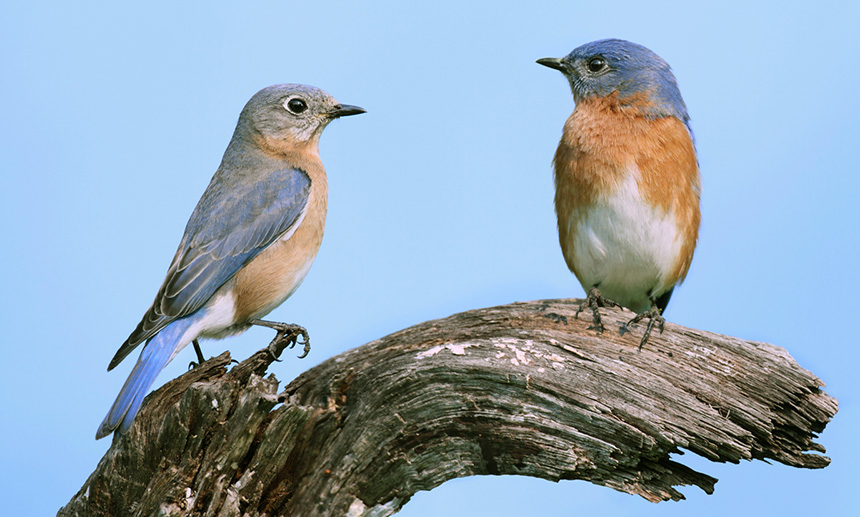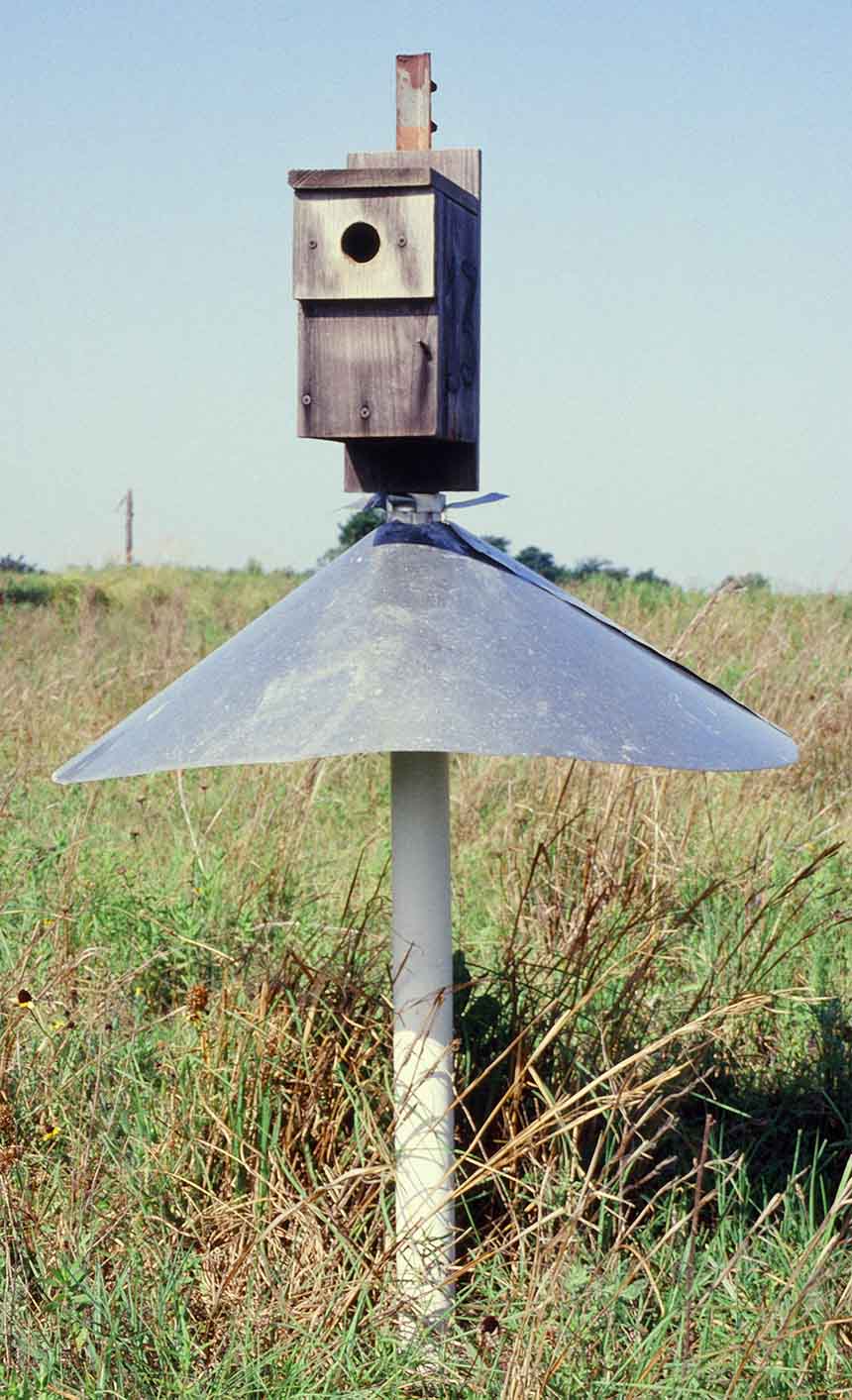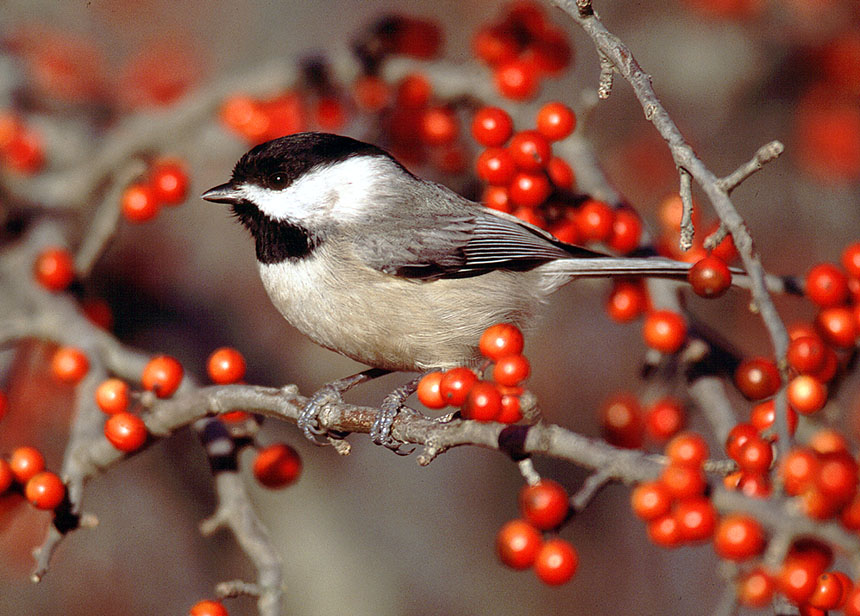Eastern Bluebird Nest Boxes
The eastern bluebird is perhaps one of the better known songbirds in Oklahoma. The male has a bright blue back, reddish chest and white belly. The female is somewhat duller in appearance. The bluebird is an “edge” species — it lives in areas where prairie is intermingled with trees or forests. Bluebirds feed primarily on insects.
While most of us are familiar with bluebirds, few of us realize that their population numbers declined during most of the 20th century. One of the major reasons for this decline that we can help alleviate is the loss of suitable nesting habitat. Bluebirds are cavity nesters, nesting in hollows in trees. People have destroyed many potential nest sites by removing old and dead trees. To compound the problem, bluebirds have competition for available nest sites from two non-native birds — European starlings and house sparrows.


Nest Boxes
To help bluebird reproduction, as well as that of other cavity-nesting songbirds, we can erect nesting structures (nest boxes) in areas where other habitat requirements are met. A blueprint for the “one board” bluebird nest box is included. Several other effective designs are available, but this is among the easiest to construct and clean. The best material to use for nest box construction is bald cypress, but pine or eastern red cedar work well, too.
Bluebird houses should be placed about four to five feet above the ground, preferably on posts with predator guards attached. The boxes should have the entrance hole situated in a northerly, easterly or northeasterly direction to keep sunlight from shining directly in the hole during the afternoon and overheating the interior. The box should be placed in the open, at least six feet from limbs or fences. In suitable habitat, bluebird boxes can be placed 100 yards apart.

Nest boxes should be cleaned and, if necessary, repaired at least once a year during winter. Monitoring a nest box weekly during nesting season and removing each nest after it is abandoned by the adults and brood can encourage two or three nesting attempts per nest box each year. Nesting season for eastern bluebirds in southern Oklahoma and northern Texas generally starts in early March and ends in early August. It is best to use a predator guard to help protect eggs, nestlings and adult birds from predators such as the black rat snake, house cats, raccoons and fox squirrels. Nest boxes like the one depicted here also are used by other native cavity-nesting songbirds like the Carolina chickadee, tufted tit mouse and Bewick’s wren.
Article Reprint
For article reprint information, please visit our Media Page.

